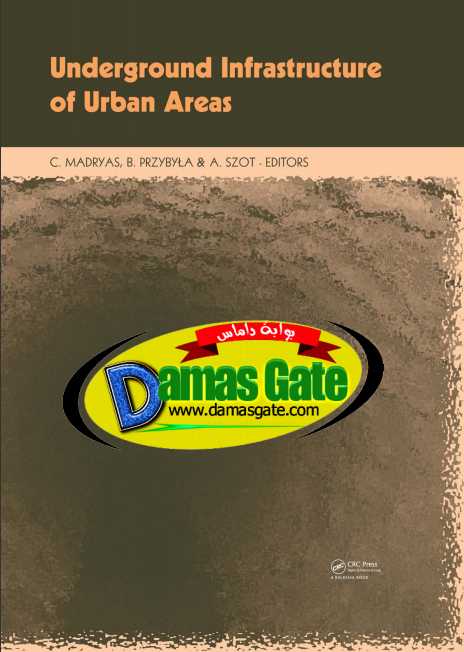Underground Infrastructure of Urban Areas

Preface
In most cases, towns have grown up on the basis of industrial capital and relevant rules of industrialization.
It has caused that such towns are malfunctioning, expensive, not ecological with all resulting
consequences impeding everyday life of their inhabitants. Thus, public expectations are that portions
of towns subjecting to modernization and also expansion of such towns would be progressed
with utmost consideration for residential comfort by adapting newly grown town infrastructure to
social, spiritual and cultural needs resulting from changed style of life and continuously changing
scale of values. Creating urbanized space of such features is one among fundamental tasks that
need to be undertaken to fulfil the expectations specified above. This task is also resulting from the
necessity of unifying the towns and adapting them to standards becoming popular due to globalization
process. New projects of modernization and expansion of towns having been now coming
into being must be distinguished by better-than-before use of town space through stereoization
of development, i.e. development of tower-block housing and underground structures. To meet
this condition a higher level of integration of infrastructure systems among which the following
equipment is distinguished:
- equipment related to communication services for the town;
- equipment connected with power management, water supply and sewage disposal system, waste
disposal and management;
- communication and information related systems which, assuming the need of control, also in
respect to the remaining infrastructure systems, create the basis of urban management system.
The most important is however to work out engineering solutions that would be the basis for
creating integrated structures. The fundamental assumption for such studies must be creation of
urbanized space enabling:
- to exchange energy between systems/equipment and to use town heat from some structures, such
as for example communication tunnels, sewage system or power systems, etc.
- self-filling in of the water supply system (by waste water treatment),
- to rise the safety of town inhabitants both in respect of natural threats (flood, seismic and
paraseismic quakes, etc.) and external risks (terrorist or war actions),
- to use the profits resulting from stereoization of town, i.e. temperature, humidity and acoustic
conditions other than those existing over the ground,
- to release the ground space from some functions (first and foremost the communication related
functions) which shall be mainly used for residential and recreational purposes,
- to renovate the historical, cultural and ecological environment of city centres.
Thus, researches, planners and investors must focus their attention on making better use of
underground space as the potential to improve town communication, on expanding centre capacity
by moving many commercial and service function underground, and also on modernization and
integration of underground system to improve their functionalities and to create conditions for
construction and operation of other underground structures.
Should the specified targets be reached, a package of administration regulations preferential for
underground construction would be necessary, such which affects, but are not limited to the rules
of crediting, subsidizing or commissioning the best solutions.
According to experience gained to date in developed countries we can state that the underground
space would be, and often already is, used without any limitations to generally all purposes (except
residential function, which in this way could get more space on the ground). However this would
Download
*